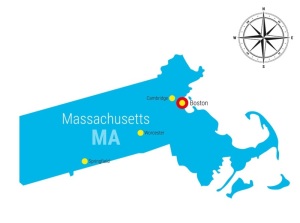by
Thomas Dworetzky, Contributing Reporter | May 08, 2018
New government findings from Massachusetts have found that the commonwealth ranks as the fourth highest-spending state for imaging services, with $892 in annual costs per Medicare beneficiary, 14 percent higher than the U.S. average.
“This is a contributing factor to higher overall health care costs in Massachusetts,” the report said.
The seventh annual report from the Massachusetts Health Policy Commission (HPC) also found that use was “high, compared to other states.”
Massachusetts ranks 12th highest, with electrocardiograms (EKG) “particularly high,” it stated, noting that EKG utilization is fully a third greater versus the nationwide average.
It addition, imaging is more expensive in the state, ranging from 3 to 20 percent higher than the nationwide average.
“The average price for one common imaging procedure (ultrasound of the heart) was $459 in Massachusetts, compared to an average U.S. price of $379, a 21 percent difference,” the report found.
In-state prices also vary widely, with hospital-based service “typically more than twice as high,” versus a doctor's office or other non-facility setting.
For example, the average cost of a brain MR with contrast in hospital was double, at $699, versus $337 in a non-hospital.
Compounding the costs, the state ranked 18th for facility-based procedures.
“Experts find that imaging is prone to overuse,” stated the report, noting that, “spending on unnecessary imaging tests, which comprise a large share of unnecessary care identified in the Choosing Wisely initiative, can often lead to radiation risks and further excess costs due to false positives or follow-up on benign issues.”
Total Original Medicare spending for imaging in the commonwealth totaled $762.1 million in 2015, or 5.6 percent of Original Medicare spending, and 1.3 percent of total healthcare expenditures – about $892 per beneficiary
This was 14 percent higher than the amount spent in the rest of the U.S. – $782 per beneficiary.
In March,
MR and CT were singled out as drivers of U.S. healthcare spending in a study appearing in JAMA.
Relative to population, the U.S. had the third most CT scanners and second most MR scanners, (Japan had the highest ratio of each). The lowest per capita rate for both MR units and CT scanners was in the U.K.
The U.S. performed the second highest rate of MR scans and the highest of CT scans per capita.
The average payment for a CT scan in the U.S. was $896. The same scan was $97 in Canada, $279 in the Netherlands, $432 in Switzerland, and $500 in Australia in 2013. Similarly, the average payment for an MR in the U.S. was $1145 versus $350 in Australia and $461 in the Netherlands.
“While there have been various efforts to account for the differences, the aim of our study was to bring together a comprehensive set of data to examine whether the common explanations for why the U.S. spends so much hold up to scrutiny,” Dr. Irene Papanicolas of the Harvard T. H. Chan School of Public Health, told HCB News.
